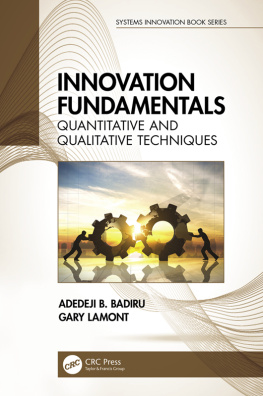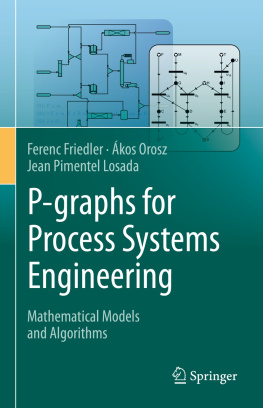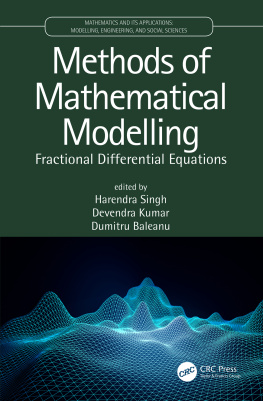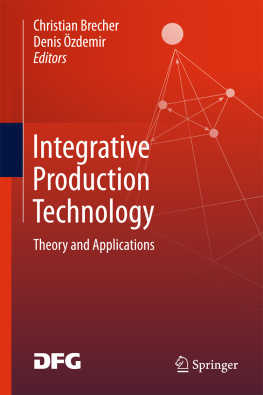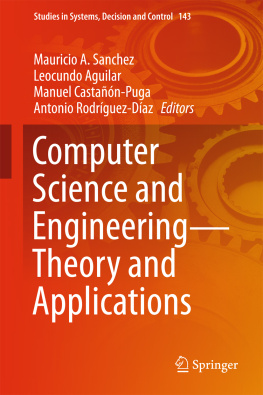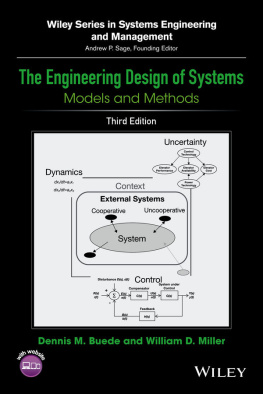Badiru Adedeji Bodunde - Systems engineering models : theory, methods, and applications
Here you can read online Badiru Adedeji Bodunde - Systems engineering models : theory, methods, and applications full text of the book (entire story) in english for free. Download pdf and epub, get meaning, cover and reviews about this ebook. year: 2019, publisher: CRC Press (CAM), genre: Romance novel. Description of the work, (preface) as well as reviews are available. Best literature library LitArk.com created for fans of good reading and offers a wide selection of genres:
Romance novel
Science fiction
Adventure
Detective
Science
History
Home and family
Prose
Art
Politics
Computer
Non-fiction
Religion
Business
Children
Humor
Choose a favorite category and find really read worthwhile books. Enjoy immersion in the world of imagination, feel the emotions of the characters or learn something new for yourself, make an fascinating discovery.

- Book:Systems engineering models : theory, methods, and applications
- Author:
- Publisher:CRC Press (CAM)
- Genre:
- Year:2019
- Rating:4 / 5
- Favourites:Add to favourites
- Your mark:
- 80
- 1
- 2
- 3
- 4
- 5
Systems engineering models : theory, methods, and applications: summary, description and annotation
We offer to read an annotation, description, summary or preface (depends on what the author of the book "Systems engineering models : theory, methods, and applications" wrote himself). If you haven't found the necessary information about the book — write in the comments, we will try to find it.
Systems engineering models : theory, methods, and applications — read online for free the complete book (whole text) full work
Below is the text of the book, divided by pages. System saving the place of the last page read, allows you to conveniently read the book "Systems engineering models : theory, methods, and applications" online for free, without having to search again every time where you left off. Put a bookmark, and you can go to the page where you finished reading at any time.
Font size:
Interval:
Bookmark:
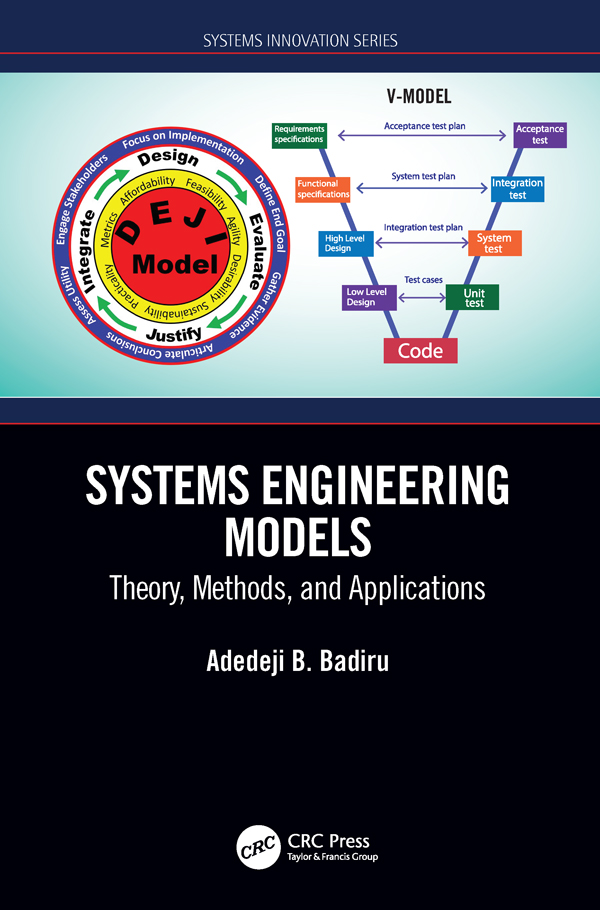
MATLAB is a trademark of The MathWorks, Inc. and is used with permission. The MathWorks does not warrant the accuracy of the text or exercises in this book. This books use or discussion of MATLAB software or related products does not constitute endorsement or sponsorship by The MathWorks of a particular pedagogical approach or particular use of the MATLAB software.
CRC Press
Taylor & Francis Group
6000 Broken Sound Parkway NW, Suite 300
Boca Raton, FL 33487-2742
2019 by Taylor & Francis Group, LLC
CRC Press is an imprint of Taylor & Francis Group, an Informa business
No claim to original U.S. Government works
Printed on acid-free paper
International Standard Book Number-13: 978-1-138-57761-9 (Hardback)
This book contains information obtained from authentic and highly regarded sources. Reasonable efforts have been made to publish reliable data and information, but the author and publisher cannot assume responsibility for the validity of all materials or the consequences of their use. The authors and publishers have attempted to trace the copyright holders of all material reproduced in this publication and apologize to copyright holders if permission to publish in this form has not been obtained. If any copyright material has not been acknowledged, please write and let us know so we may rectify in any future reprint.
Except as permitted under U.S. Copyright Law, no part of this book may be reprinted, reproduced, transmitted, or utilized in any form by any electronic, mechanical, or other means, now known or hereafter invented, including photocopying, microfilming, and recording, or in any information storage or retrieval system, without written permission from the publishers.
For permission to photocopy or use material electronically from this work, please access www.copyright.com (http://www.copyright.com/) or contact the Copyright Clearance Center, Inc. (CCC), 222 Rosewood Drive, Danvers, MA 01923, 978-750-8400. CCC is a not-for-profit organization that provides licenses and registration for a variety of users. For organizations that have been granted a photocopy license by the CCC, a separate system of payment has been arranged.
Trademark Notice: Product or corporate names may be trademarks or registered trademarks, and are used only for identification and explanation without intent to infringe.
Library of Congress Cataloging.in.Publication Data
Names: Badiru, Adedeji Bodunde, 1952- author.
Title: Systems engineering models : theory, methods, and applications / authored by Adedeji B. Badiru.
Description: Boca Raton : Taylor & Francis, a CRC title, part of the Taylor & Francis imprint, a member of the Taylor & Francis Group, the academic division of T&F Informa, plc, 2019. | Series: Systems innovation series | Includes bibliographical references.
Identifiers: LCCN 2018053760| ISBN 9781138577619 (hardback : acid-free paper) | ISBN 9781351266529 (e-book)
Subjects: LCSH: Simulation methods. | Systems engineering.
Classification: LCC T57.62 .B33 2019 | DDC 620/.0042dc23
LC record available at https://lccn.loc.gov/2018053760
Visit the Taylor & Francis Web site at
http://www.taylorandfrancis.com
and the CRC Press Web site at
http://www.crcpress.com
To the systems view of the world
Series Editor:
Adedeji B. Badiru
Air Force Institute of Technology (AFIT) Dayton, Ohio
Systems Innovation refers to all aspects of developing and deploying new technology, methodology, techniques, and best practices in advancing industrial production and economic development. This entails such topics as product design and development, entrepreneurship, global trade, environmental consciousness, operations and logistics, introduction and management of technology, collaborative system design, and product commercialization. Industrial innovation suggests breaking away from the traditional approaches to industrial production. It encourages the marriage of systems science, management principles, and technology implementation. Particular focus will be the impact of modern technology on industrial development and industrialization approaches, particularly for developing economics. The series will also cover how emerging technologies and entrepreneurship are essential for economic development and society advancement.
Defense Innovation Handbook:
Guidelines, Strategies, and Techniques
Edited by Adedeji B. Badiru and Cassie Barlow
Productivity Theory for Industrial Engineering
Ryspek Usubamatov
Quality Management in Construction Projects
Abdul Razzak Rumane
Company Success in Manufacturing Organizations:
A Holistic Systems Approach
Ana M. Ferreras and Lesia L. Crumpton-Young
Introduction to Industrial Engineering
Avraham Shtub and Yuval Cohen
Design for Profitability: Guidelines to Cost Effectively Manage the Development Process of Complex Products
Salah Ahmed Mohamed Elmoselhy
For more information about this series, please visit: https://www.crcpress.com/Systems-Innovation-Book-Series/book-series/CRCSYSINNOV
There is a need for all engineers and nonengineers to understand the interdisciplinary and cross-functional nature of systems engineering, and the benefits of following rigorous systems engineering processes in organizational pursuits. This book provides the knowledge and understanding necessary to achieve a basic understanding of systems engineering, from a general applications perspective. The theory, methods, tools, techniques, and applications of systems engineering are covered in the book. The interactions between systems engineering and other disciplines are discussed. The book presents a comprehensive compilation of practical systems engineering models. The application and recognition of systems engineering continue to grow rapidly. In spite of this, there is limited collation of the various systems engineering models available. These models were developed explicitly for applications in various fields of endeavor. Notable among the models covered in this book are the V-model, the Tornado model, the Spiral model, the DEJI model, and the waterfall model. There are also many in-house and customized models developed by companies specifically for organizational needs. This book is intended to boost the collection of published titles on systems engineering. Although systems engineering models are used widely, there is a limited availability of titles dedicated specifically to how to use the models. A better understanding of the models, through a comprehensive reference book, will make systems engineering to be more visible, embraced, and applied across the spectrum. Not many books currently on the market address the availability and usability of systems engineering models as a tool for operational efficiency and organizational effectiveness. A system is defined as the collection of interrelated elements (subsystems) whose collective output is higher than the sum of the outputs of the individual elements. This aptly defines how everyday efforts manifest themselves. A sports team is a good example of this. The performance of a team is the result of the collective efforts of the players rather than the output of a single player. Without a structured guidance, we are likely to focus on the individual elements rather than the overall system. A key benefit for readers of this book is the ability to get better results due to systems efficiency and effectiveness. A system, in this regard, facilitates a full consideration and appreciation of all the obvious and subtle elements of any process. Some of the models espoused in this book include the V-model, the waterfall model, and the DEJI model (see www.DEJImodel.com for model details). Based on the systems integration component of the DEJI model, it is the featured model in this book as it cuts across applications of the other models.
Next pageFont size:
Interval:
Bookmark:
Similar books «Systems engineering models : theory, methods, and applications»
Look at similar books to Systems engineering models : theory, methods, and applications. We have selected literature similar in name and meaning in the hope of providing readers with more options to find new, interesting, not yet read works.
Discussion, reviews of the book Systems engineering models : theory, methods, and applications and just readers' own opinions. Leave your comments, write what you think about the work, its meaning or the main characters. Specify what exactly you liked and what you didn't like, and why you think so.

